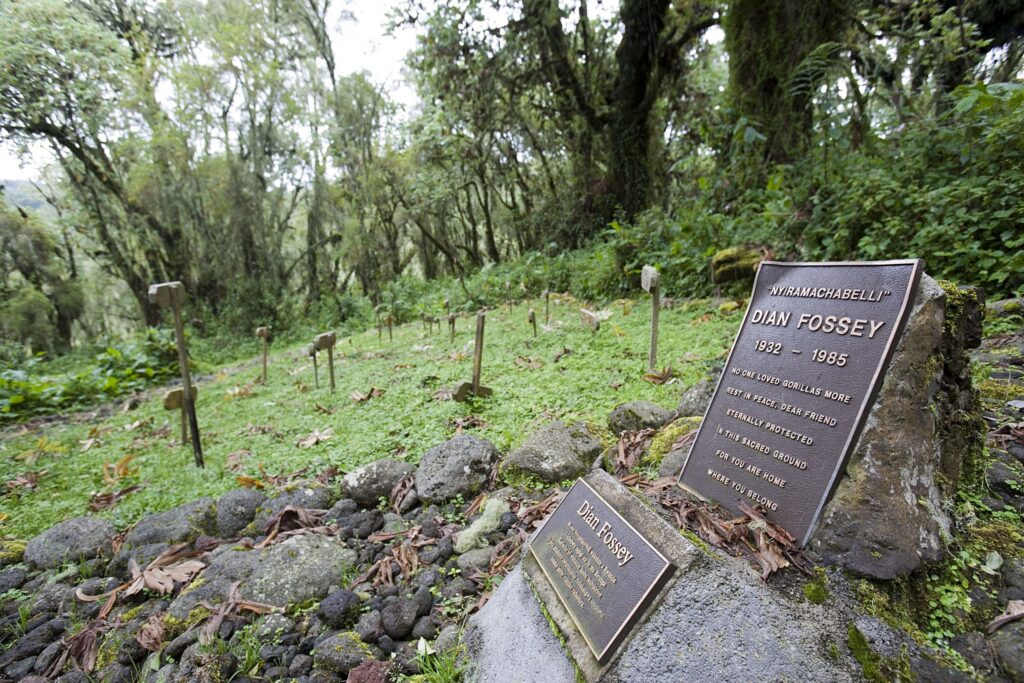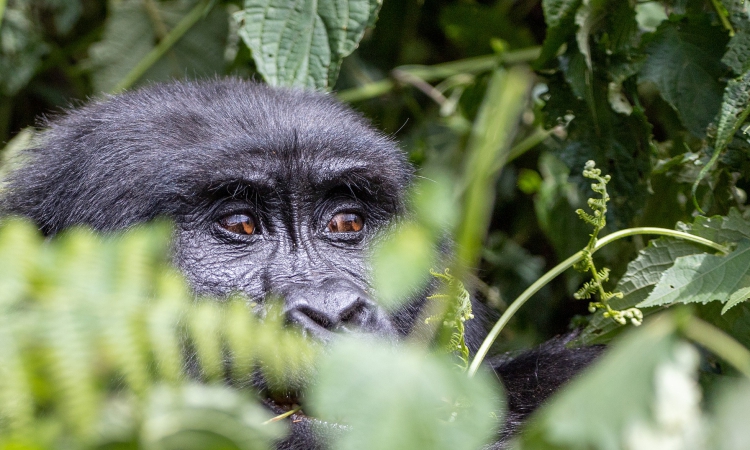Dian Fossey Grave Site – Dian Fossey was an American primatologist and conservationist born on January 11, 1932, in San Francisco, California, USA. She became very famous and widely known in 1966 when she began an extensive study of mountain gorilla groups in Rwanda after being invited to work there by paleoanthropologist Louis Leakey.
She continued her work until her murder on December 26, 1985, at the age of 53.
While conducting her research, Fossey wrote and published the book Gorillas in the Mist, which was her account of her scientific study of the gorillas at Karisoke Research Center and her career two years before her death.
This book was later adapted into a film in 1988 titled Gorillas in the Mist. Her great passion and enthusiasm for animals started right from childhood.
During her 20 years in Rwanda, Fossey was a leading primatologist and a member of the group of female scientists recruited by Leakey to study apes in their natural environment, “Primates.”
She worked alongside Jane Goodall, who specialized in studying chimpanzees, and Biruté Galdikas, who focused on orangutans.
Fossey raised global awareness against poaching and tourism in wildlife habitats, emphasizing the intelligence of gorillas.

Dian’s conservation efforts and research greatly impacted the reduction of the declining population trend of mountain gorillas not only in Rwanda but also in the DRC.
She established the Karisoke Research Center, located between Mount Bisoke and Mount Karisimbi, in 1967.
Fossey became the first human to study and understand the behavior of mountain gorillas, gaining their acceptance and learning their body language.
By the time of her death, Fossey had made many enemies, including poachers and animal traffickers, due to her extreme methods to protect and conserve endangered species.
These enemies possibly led to her brutal murder in the middle of the night in her home in the mountains.
She was buried at Karisoke Research Center alongside the gorillas she devoted her life to protecting.
Fossey’s measures at Karisoke provided ways for gorillas to become accustomed to humans, as poaching had traumatized them, making them fierce and afraid of humans, leading to retaliatory attacks.
These habituation principles for gorillas, derived from Dian Fossey’s work, are still used in Rwanda’s gorilla safaris today.

Route to Dian Fossey’s Grave
After her murder, Dian was buried at her research center at Karisoke, which is now one of the most distinct tourist attractions in the volcanoes.
It is a walk of about 2-3 hours with rest stops in between. Along the way, tourists encounter various animals and are required to be accompanied by park rangers to protect them from dangerous wildlife or poachers, though poachers are now almost non-existent.
The route often features small primates and different bird species.
Sometimes tourists are lucky enough to see endangered mountain gorillas and golden monkeys along the slopes. The beautiful Albertine Rift Valley is also visible among the volcanoes.
The Dian Fossey Grave is located at an altitude of about 3,000 meters above sea level.
Visitors have enough time to pay homage to Dian Fossey and are advised to acquire their permits between the months of June and September.
The permits can be secured through the official website of the Rwanda Development Board or the services of a tour operator, costing about 75 USD.

What to Carry
Visitors are advised to bring cameras, insect repellents, notebooks, and pens.
Accommodation
Visitors are advised to book accommodation at one of the magnificent hotels, including Virunga Lodge, Le Bambou Gorilla Lodge, etc.
There is much to learn at this grave-site about the work done by Dian Fossey.










